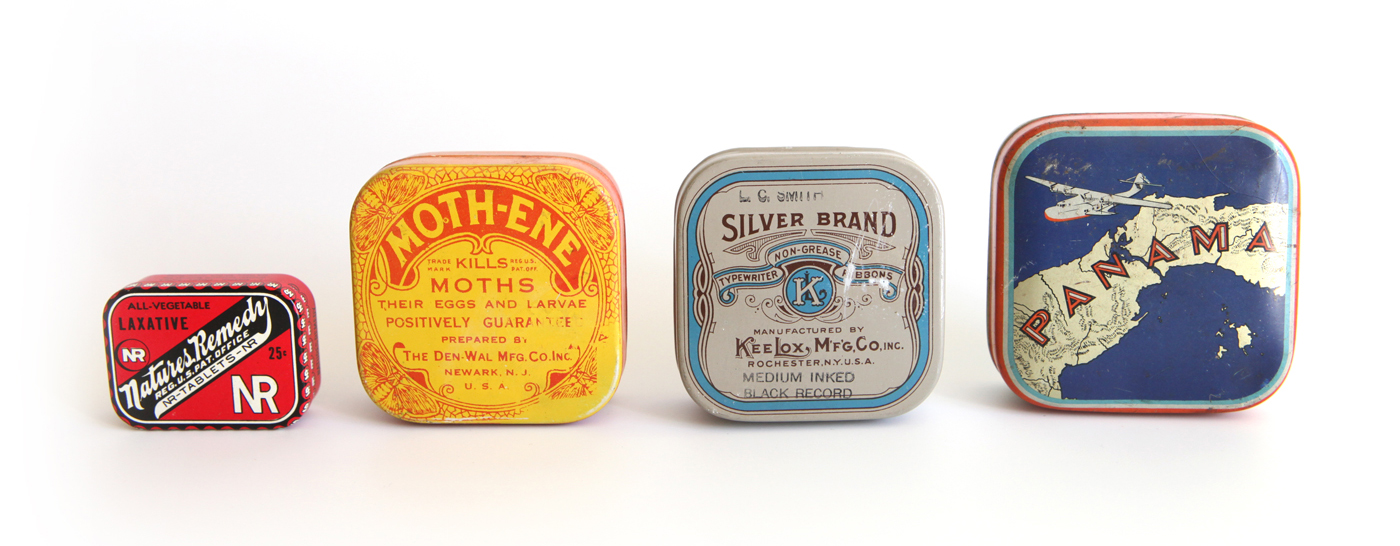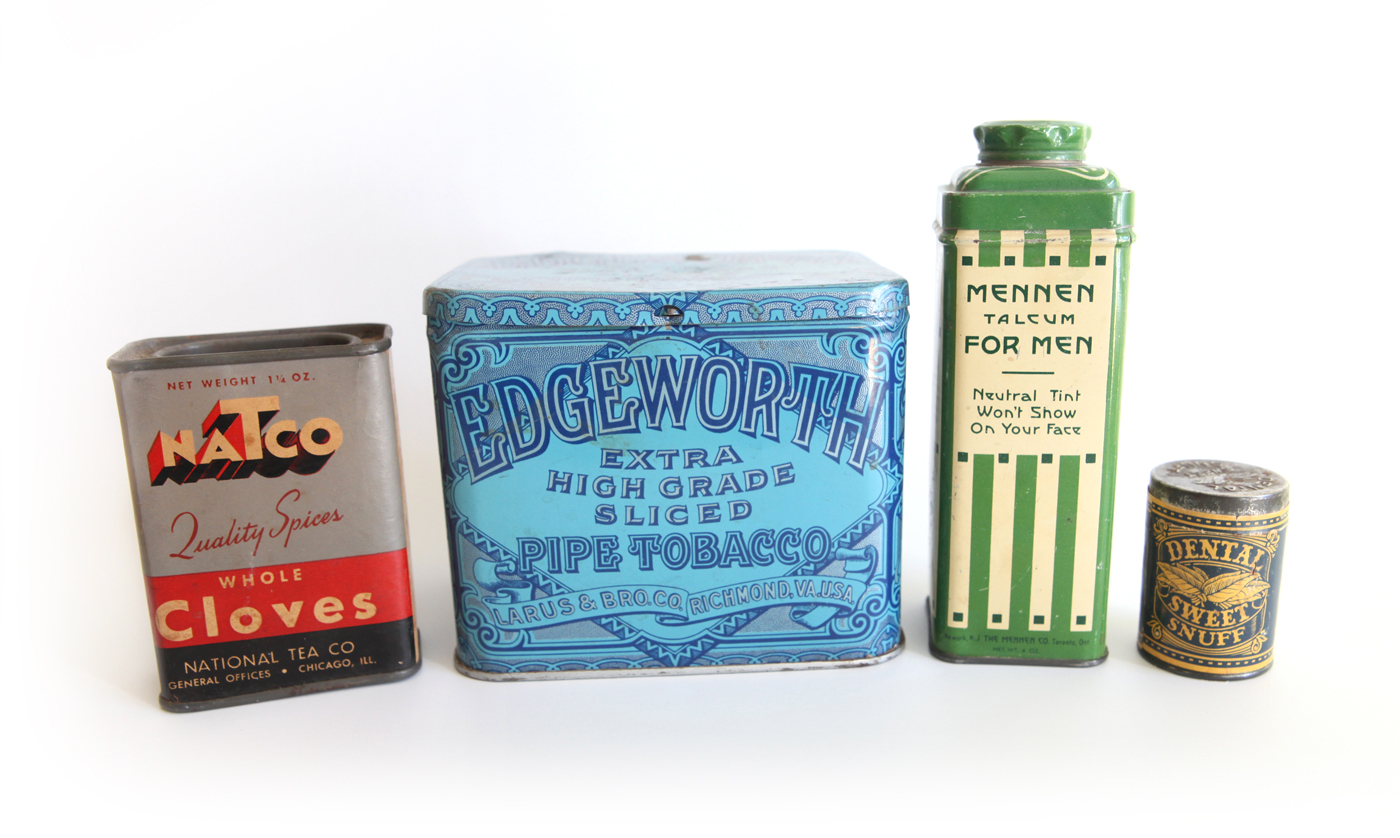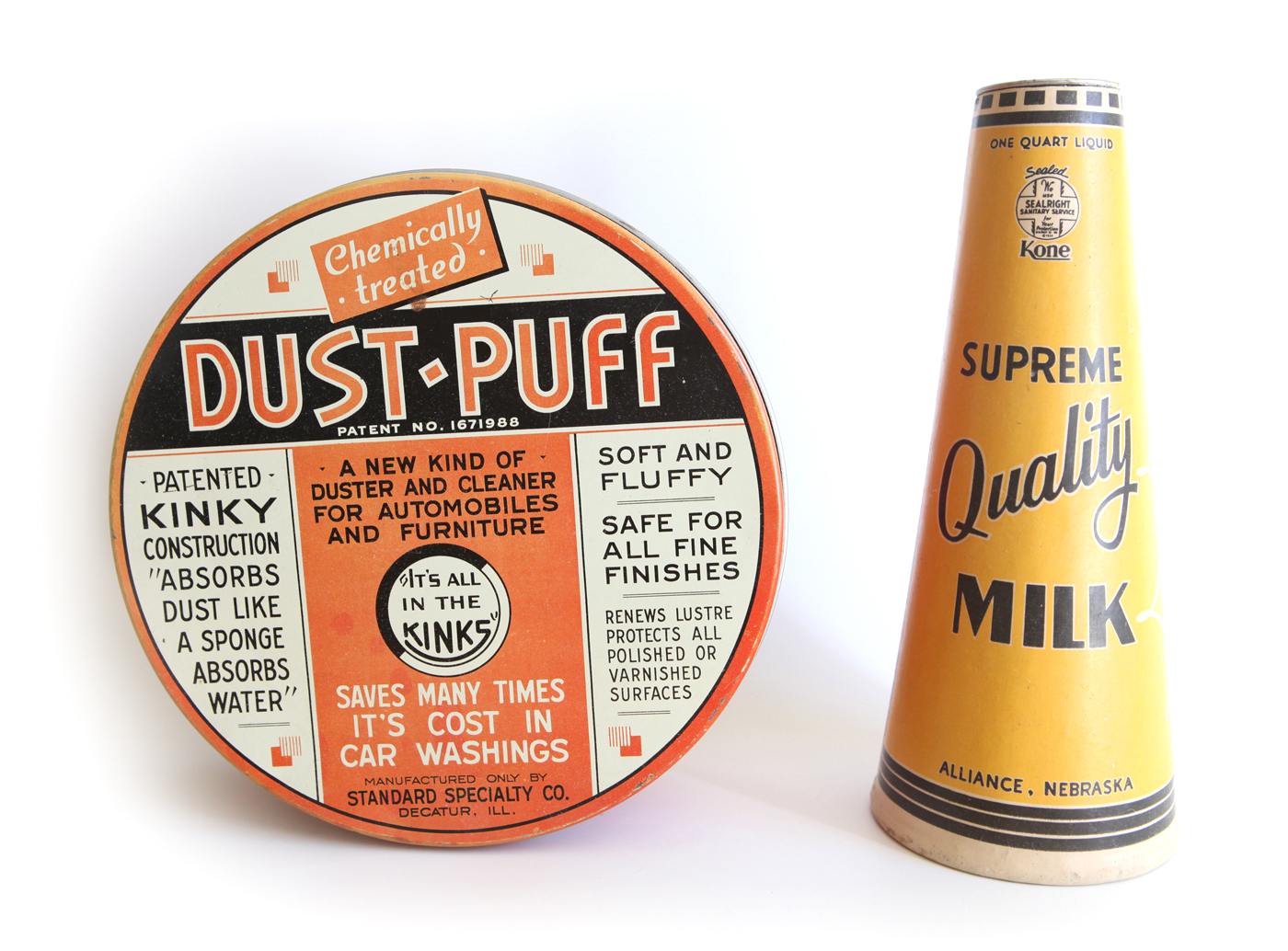As the renowned Louise Fili has said, “everything looks better on a tin”. Amongst all the little advertising items I collect, little tins are probably one of my favorites. It seems that nearly everything was packaged in these sturdy little boxes at one point, from laxatives to typewriter ribbons.

From the left: laxative, moth-deterrent, and two typewriter ribbons
Initially, due to the limitation of production methods, the tins were covered with paper labels. But by the time the late 1800’s rolled around, using lithography to print directly on tins was very popular. In due time, lithography evolved to accommodate printing on almost any color or shape of tin.

From the left: Spice tin, pipe tobacco, men’s cosmetics, chewing tobacco
As Collector’s Weekly states, back in the day when these tins were popular (in the late 1800’s – early 1900’s), pre-packaged items were regarded as superior, unlike today’s trend of ‘the fresher, the better’. The general trend for processed edible items are said to have started as the public became aware of the importance of sanitation, when germ theory went mainstream in the mid-1850’s. Compared to the general pile of items held in barrels and shelves, these packaged goods were considered more sanitary, and therefore of a higher class.

From the left: Automotive cleaner, milk container (part tin, part waxed paper)
Due to high volume of tins produced, they’re relatively cheap to collect and the bright, eye-catching designs are easily worth a place on your display shelf. If you’re as nerdy as I am and have a tin that you want to know more about, this Sussex-Lisbon Area Historical Society, Inc. website is a great (although archaic) resource to trace your tin. Happy collecting!
